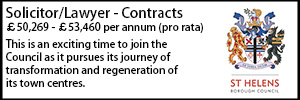Mineral rights: mudstone in mid-Wales
- Details
Mark Wonnacott QC and Harriet Holmes examine an important Court of Appeal ruling on the law relating to mineral reservations.
The Court of Appeal has handed down judgment in Wynne-Finch & Ors v. Natural Resources Body for Wales [2021] EWCA Civ 1473, upholding the first instance decision of Mrs Justice Falk ([2020] EWHC 1924 (Ch)).
The case concerned the ownership and exploitation of mudstone, which is the prevailing bedrock in mid-Wales.
The case sparked some interest when the first instance decision was handed down on the basis it was thought that the High Court had ‘driven a coach and horses’ through the law and practice relating to mineral reservations when concluding that the mudstone was not within the appellants’ paper title to the sub-surface. It was suggested that the trial judge had misinterpreted the mineral reservation in conveyances dating back to 1919 and, when considering the true meaning of the relevant Inclosure Act of 1816, and awards made under that Act, had wrongly distinguished the case of Wainman v. Earl of Rosse.
The Court of Appeal has firmly concluded that there were no such errors. This decision stands as a welcome clarification in that regard and highlights that, in an area such as mines and minerals, specialist advice is required, given the difficult questions of construction and law which can arise.
The issues
The appellants claimed to own everything beneath the thin layer of surface topsoil as parcels of the manors of Arwystli and Cyfeiliog. The respondent had been merrily extracting mudstone lying beneath that topsoil for decades and using it to support foundations for a wind turbine and telecommunications and to build forest roads and tracks within its forestry estate.
The issues on the appeal were whether the mudstone was included within the appellants’ title to the sub-surface and, if so, whether the respondent had adversely possessed the mudstone stratum.
The first question: whether the mudstone had been severed from the surface
The 40 titles in dispute at first instance fell into four categories of which three were relevant on appeal. The trial judge had made the following findings about the appellants’ paper title (which were not challenged):
- A type claims: the appellants’ title was to mineral exceptions, retained out of private conveyances, as a fee simple estate in any substrata made up of substances in the exceptions.
- D type claims: the appellants’ title was to minerals excepted out of the allotments of land by awards under the Arwystli Inclosure Act 1816 and was a fee simple estate in any substrata made up of substances described in the Act.
- C type claims: the appellants’ title was the lord’s title to manorial waste and was an ordinary fee simple in the surface and everything else as one undifferentiated thing. Subsequent informal inclosure agreements with people who had common rights over the waste were personal licences and had not severed a sub-surface stratum from the surface.
For the A type claims, the Court of Appeal considered the true construction of the following exception:
EXCEPTING AND RESERVING … (a) All mines beds and quarries of coal and ironstone and all other metals stone and minerals within and under the hereditaments and premises thereby conveyed.
The appellants said that mudstone is undeniably a form of stone and so mudstone must be included in the reservation.
The Court of Appeal is not of the same view. Having considered the “principles derived from cases of high authority”, Henderson LJ (with whom Arnold and Birss LL.J agreed) said that “it would… be surprising if the word ‘stone’ were to stand out in the present case, as if stranded on an island of literal interpretation, surround as it is by words of such notoriously indeterminate meaning as ‘mines’ and ‘minerals’.” Such words are capable of excluding the prevailing stone of the district and, in this case, the language of the exception, construed in its context, did exclude the unexceptional, “commercially valueless” mudstone.
This brings English law into line with Scots law. In 1848 in Forth & Clyde Navigation v Wilsons the Inner House of the Court of Session held that blackband ironstone was not “stone” for the purpose of the seventeenth century conveyance, on the grounds that the “ignorant people” of the day would have thrown it away as “rubbish.”
As for the D type claims, the exception in the 1816 Inclosure Act is set out at para 50 of the judgment. It expressly extends to “any Mines, Ores, Coals, Metals or Minerals whatsoever” in or under the former waste of the Manor.
The appellants’ case as to construction was premised on a point made by Lord Esher MR in Consett v. Ritson, to the effect that Inclosure Acts are of a common form and should be construed according to any canons of construction in the case law. They said such a ‘canon’ came from the cases of Wainman v Rosse and Micklethwaite v Winter, with the result that a broad construction was required and mudstone was included in the reservation.
The Court dismissed these contentions too. Lord Esher MR’s point did not provide assistance in this case, where the provision was a bespoke reservation in the 1816 Act, rather than a reservation in common form. Wainman and Micklethwaite did not require the court to apply a broad construction and were cases which the trial judge had been right to distinguish, not least as they concerned strata of stone with real commercial value. Every Inclosure Act has to be construed on its own terms.
As for the C type claims, the informal inclosure agreements between the Lord and individual landowners, permitting them to inclose and cultivate parts of the waste, were no more than personal licences. They left the surface title in the appellants’ predecessors. The Court of Appeal found that by barring the appellants’ title to the surface, the respondent had also barred their title to sub-surface strata, even where the respondent’s predecessors had agreed that those strata should be excepted to a third party.
Other points
As a result, it was not necessary for the Court of Appeal to decide whether the judge’s alternative finding – that if the appellants had a paper title to the mudstone stratum in the A and D type cases, that title had been barred by adverse possession – was correct. Nor was it necessary to decide the second alternative point; that any such title had been barred by registration of the surface without any note on the register excepting that stratum from the effect of registration. Those points will, no doubt, be fought on another occasion. Nor does anything in the judgment deal with incorporeal mineral rights, retained on the enfranchisement of copyhold land, which are perhaps the most common type of right, in terms of numbers of titles if not in hectares.
Mark Wonnacott QC and Harriet Holmes are barristers at WIlberforce Chambers. They acted for the respondent, instructed by Hugh James (the team led by Robert Phillips), both in the Court of Appeal and below.
Fenner Moeran QC, also of Wilberforce, acted for the appellants, leading Oliver Radley-Gardner QC of Falcon Chambers, in the Court of Appeal, and instructed by Forsters LLP.
Sponsored articles
Walker Morris supports Tower Hamlets Council in first known Remediation Contribution Order application issued by local authority
Unlocking legal talent
Contracts Lawyer
Lawyer (Planning and Regulatory)
Legal Director - Government and Public Sector
Locums
Poll













































